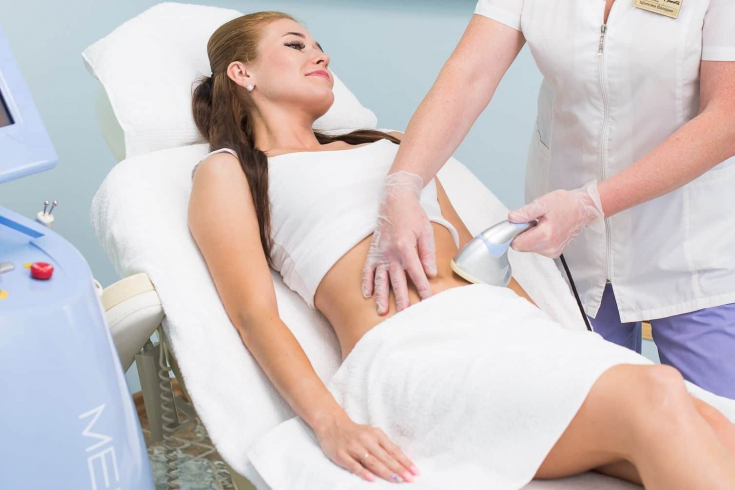An increase in the thickness of a fold of fat on the body or on the face is often disturbing to the patient. The appearance, ovals of the face and the outlines of the figure are changing. In such cases, patients often turn to nutritionists, endocrinologists, as well as cosmetologists.
In cosmetology, methods of fat reduction are in great demand. Correction of the figure and oval of the face requires the use of lipolytic methods.Lipolysismethodsare divided into surgical and therapeutic. Read more on estet-portal.com more about lipolysis methods.
- Which methods are referred to as therapeutic lipolysis
- The main types of lipolysis in cosmetology
- The main contraindications for lipolysisfor
Which methods are referred to as therapeutic lipolysis
Therapeutic lipolysis can be invasive or non-invasive.
Invasive lipolysis methods include:
- – characterized by the administration of lipolytic preparations by means of mesotherapy; needle lipolysis
- – application of electric currents to adipose tissue. At the same time, guide needles are inserted into the fatty tissue.
Injection lipolysis algorithm for double chin
Non-invasive lipolysis methods include:
- direct action on adipose tissue
- – involves the introduction of lipolytic drugs through the action of physical factors (photophoresis, iontophoresis, phonophoresis); indirect action
- is characterized by the acceleration of the lipolysis process by stimulating muscle activity and blood circulation. This is possible with vacuum and manual massage, electrical stimulation and with the help of special exercises. Direct action on adipose tissue is the most effective and specific, but almost all methods of non-mediated lipolysis damage the skin. Only such a method as phoresis can compete with invasive lipolysis methods.
Non-surgical lipolysis methodslipolysis must be present in every beauty salon.
The main types of lipolysis in cosmetology In cosmetology practice,
4 main types of lipolysis are used:
1. Ultrasonic lipolysis (cavitation). With this method, fat is destroyed without injuring the skin. Lipolysis is performed on a device that has a tube,
ultrasonic waves of different frequenciesemanate from it. Ultrasound waves penetrate deep structures and destroy fat. This technique is used to remove fat deposits on the hips, abdomen, waist, buttocks, back, arms, shoulders, forearms. Also, this type of lipolysis eliminates irregularities that appeared after applying other methods of liposuction. To apply ultrasonic lipolysis
the layer of fat must be at least 15 mm.2. Injectable
lipolysisis the most popular lipolysis method. phosphatidylcholine is supposed to be injected deep under the skin, to a depth of 12 mm. This substance is made from soy. It is also synthesized in the body. Targeted administration can act on problem areas. The method is effective in the area of the chin, buttocks, arms, lacrimal sacs, forearms and cheeks.
3. Radio frequency (radio wave) lipolysis is carried out using
heating of tissuesto 450 With the action of electromagnetic waves of 25-50 W. At the same time, microscopic areas of the skin succumb to necrosis, as well as fat cells underneath. Waves do not touch deep tissues. The method is effective in areas of the body with a thin layer of fat, as well as in case of cellulite.
After such lipolysis, the skin becomes smooth, the tissues gain density.

. With the help of the directed action of the laser beam, the structure of fat cells changes.
Adipose tissue breaks downand the decay products are excreted naturally from the body. The technique of laser lipolysis is used for fat deposits in small areas of the body that are inaccessible to other methods of liposuction. After this intervention, no traces remain on the skin. Read more on Facebook
! Surgical methods of lipolysis include fat fold removal and
liposuctionwhere the fat tissueis not surgically removed. The main contraindications for lipolysis Carrying out any manipulations provides for the preliminary exclusion of contraindications in the patient. There are also contraindications to lipolysis.
febrile conditions;
oncological processes;- extensive violations of the integrity of the skin;
- purulent processes;
- systemic skin diseases;
- presence of a pacemaker;
- individual current intolerance;
- chronic heart failure;
- pregnancy.
- You may also be interested in:
Overview of Effective Non-Invasive Fat Reduction Techniques For lipolysis on the face, the following conditions are contraindications:
frontal sinusitis or sinusitis in the acute stage;
- thyroid diseases
- ; tumor diseases and breast cysts; gold
- reinforcement.
- Lipolysis can be dangerous due to the possible development of a burn by electrolysis products. To avoid this, it is important to pay special attention to the gaskets under the electrodes. Pads should be disposable, thick and well finished. It is important to follow the
during the lipolysis procedure. During lipolysis, the patient should not talk
, as the electrodes may move when talking. See also the video on our YouTube







Add a comment